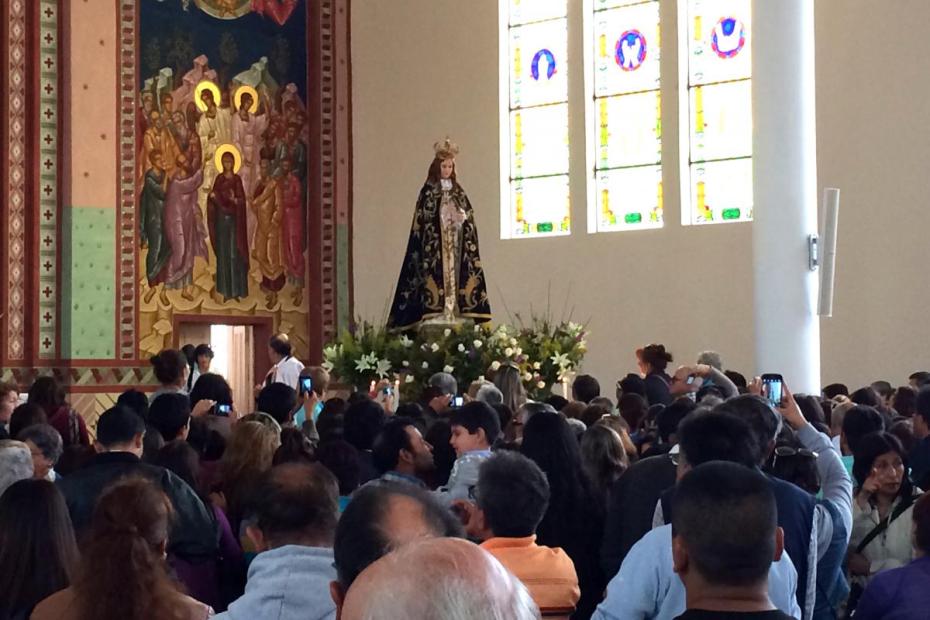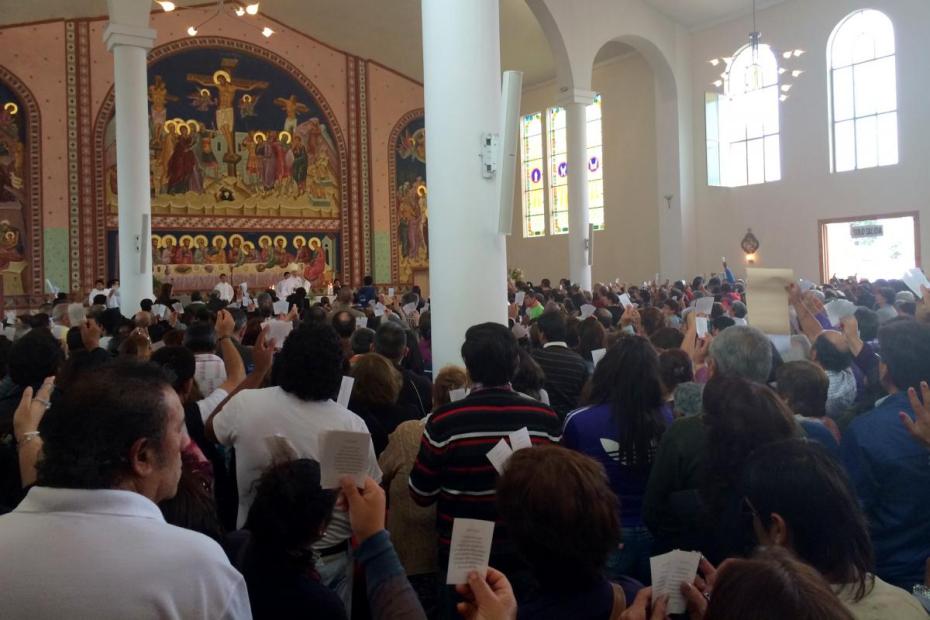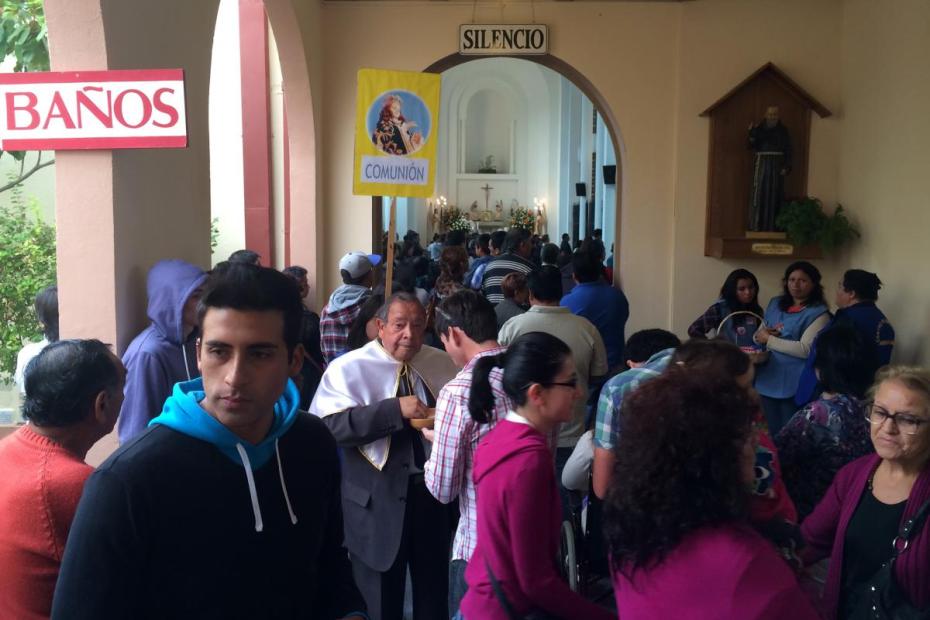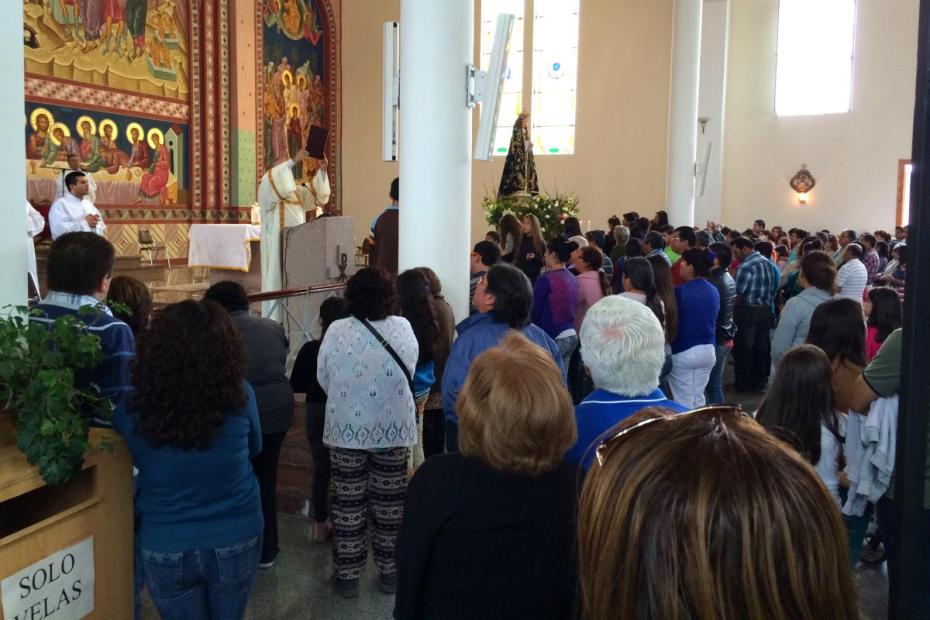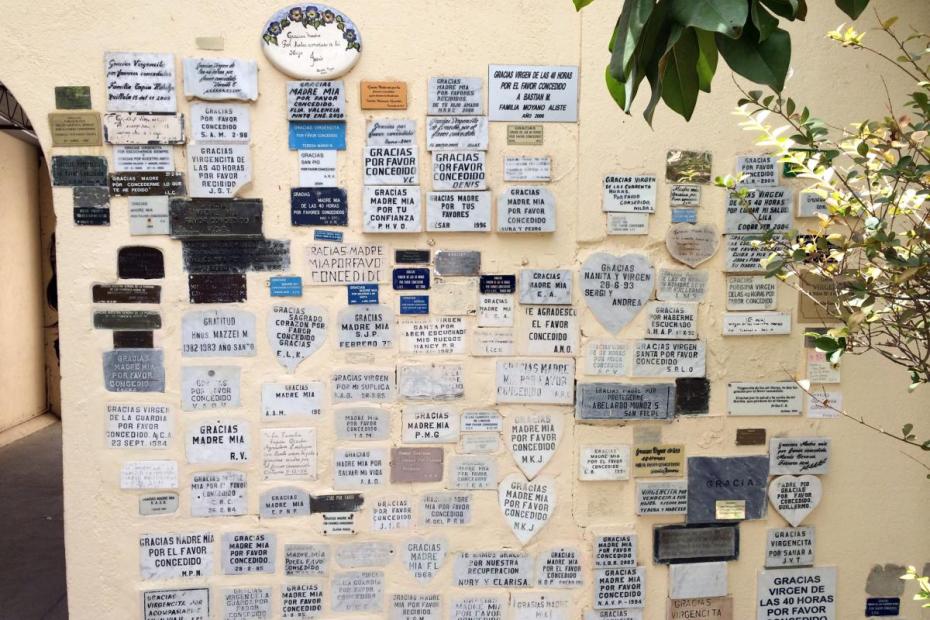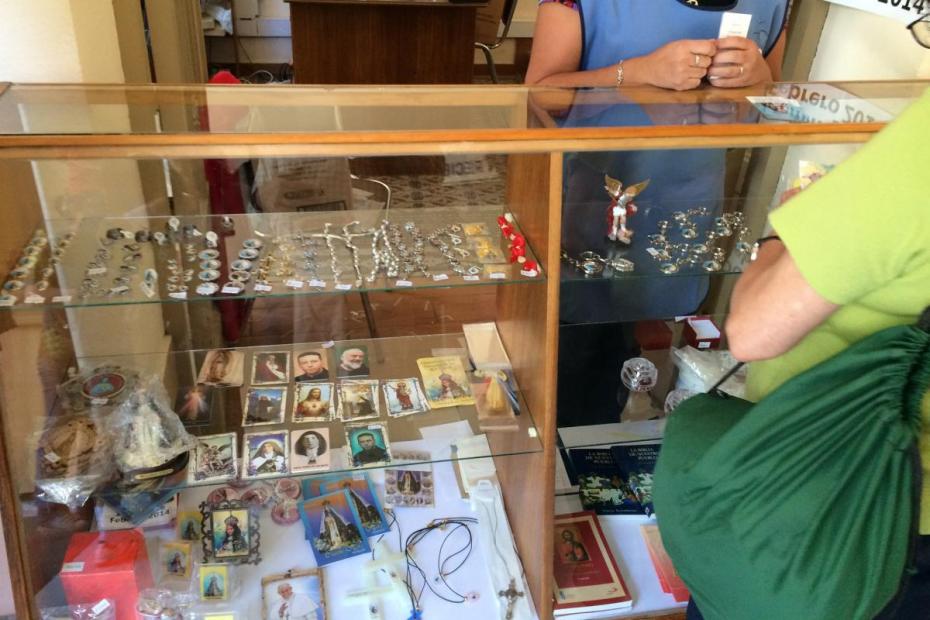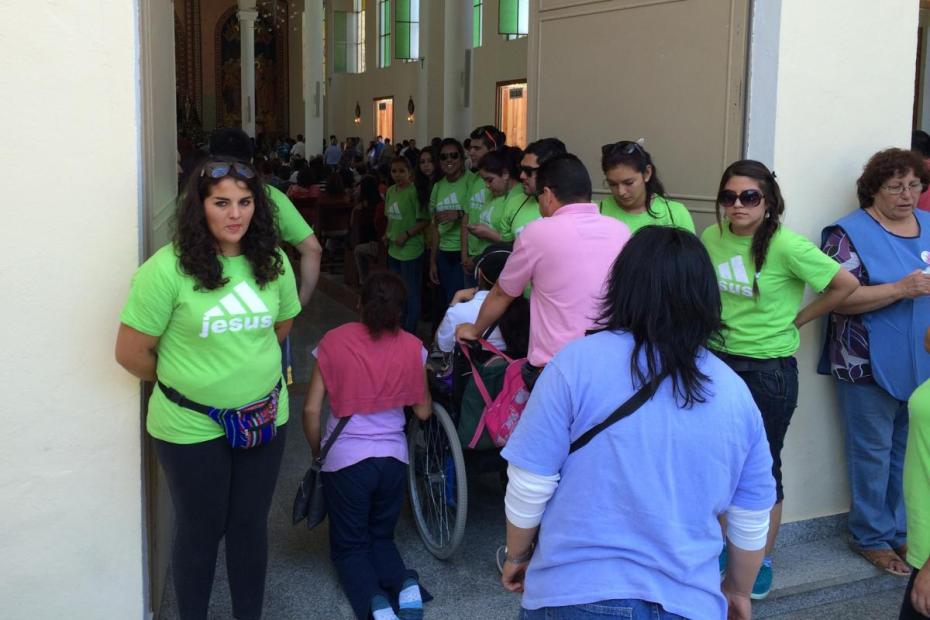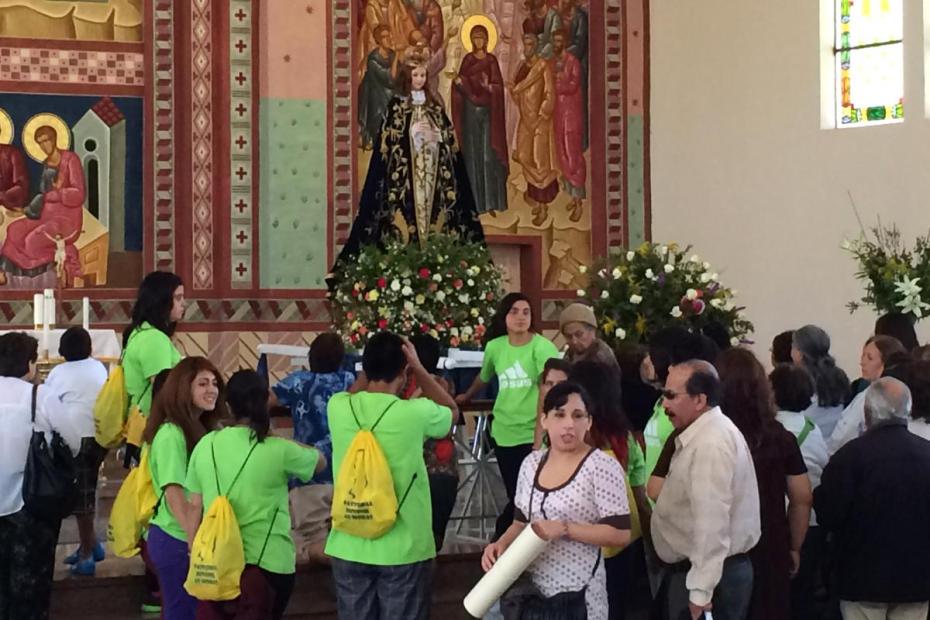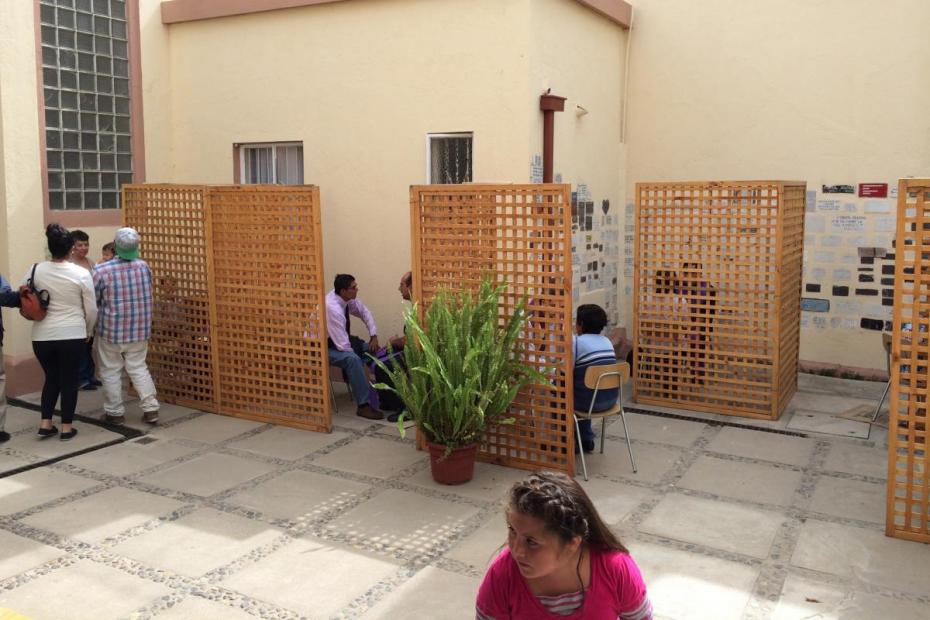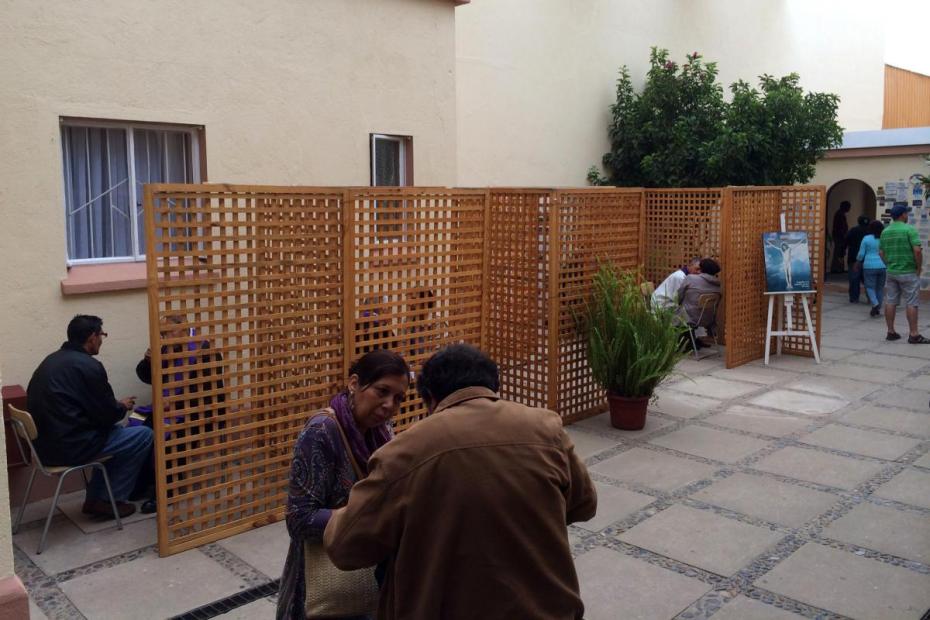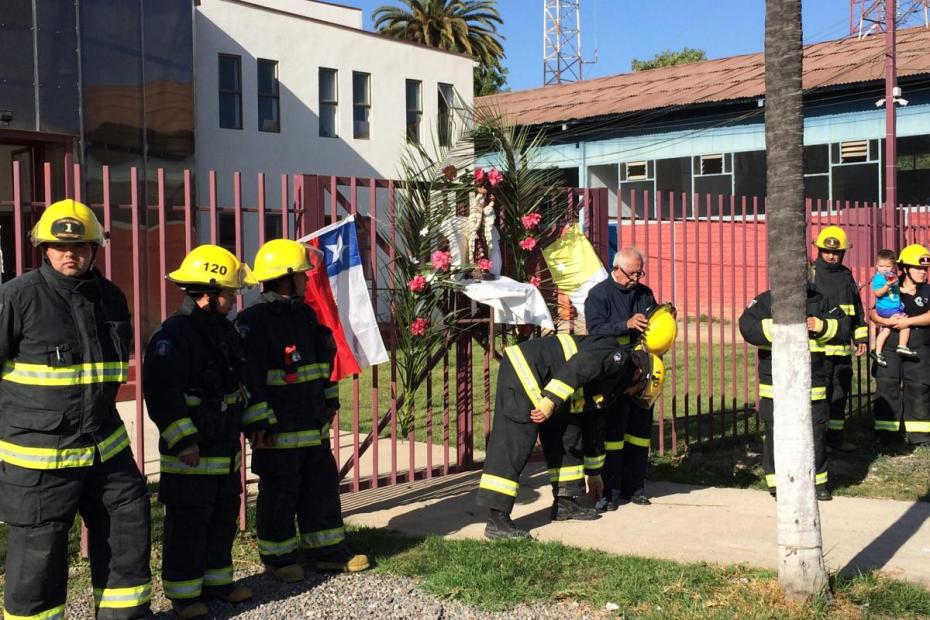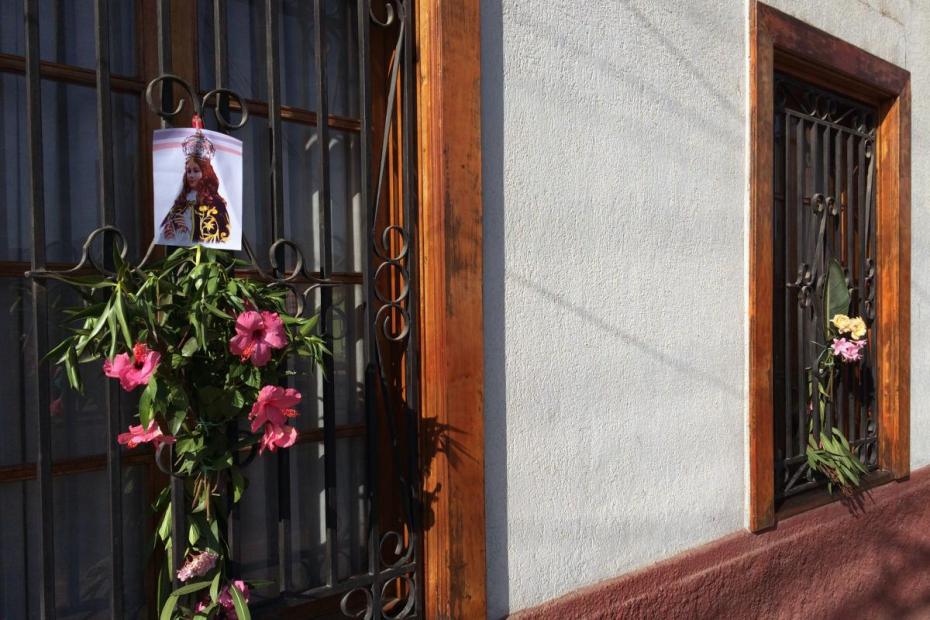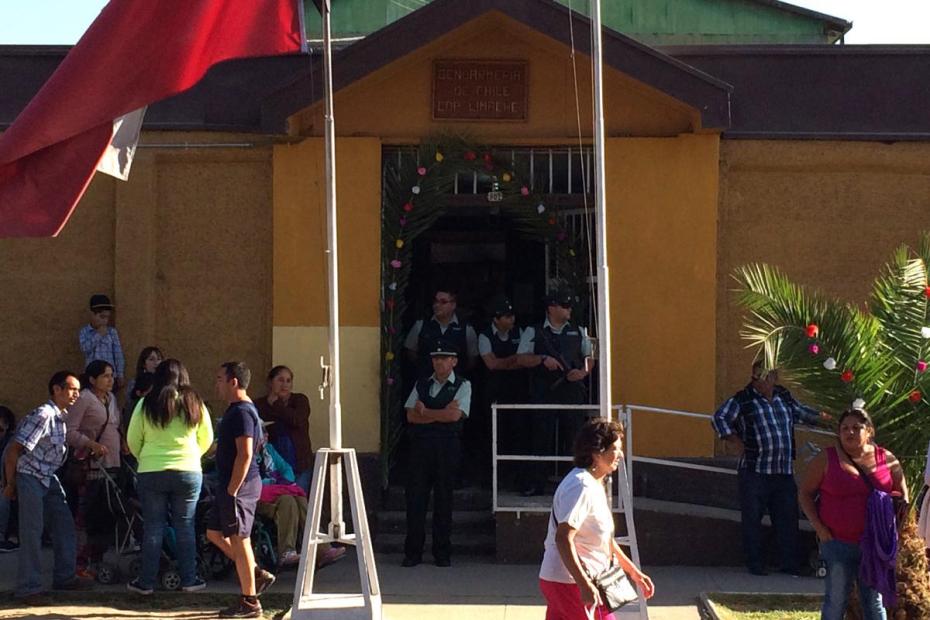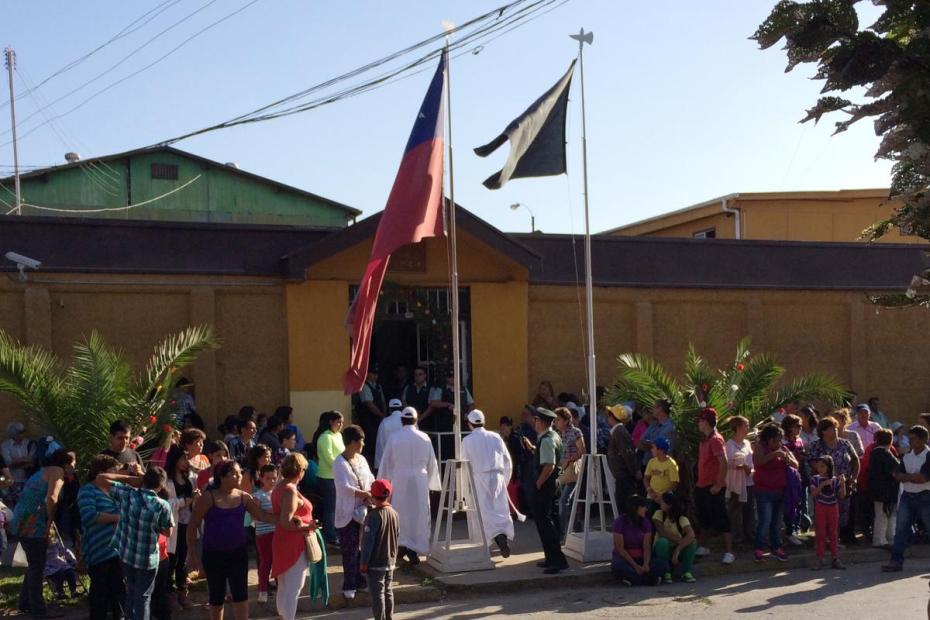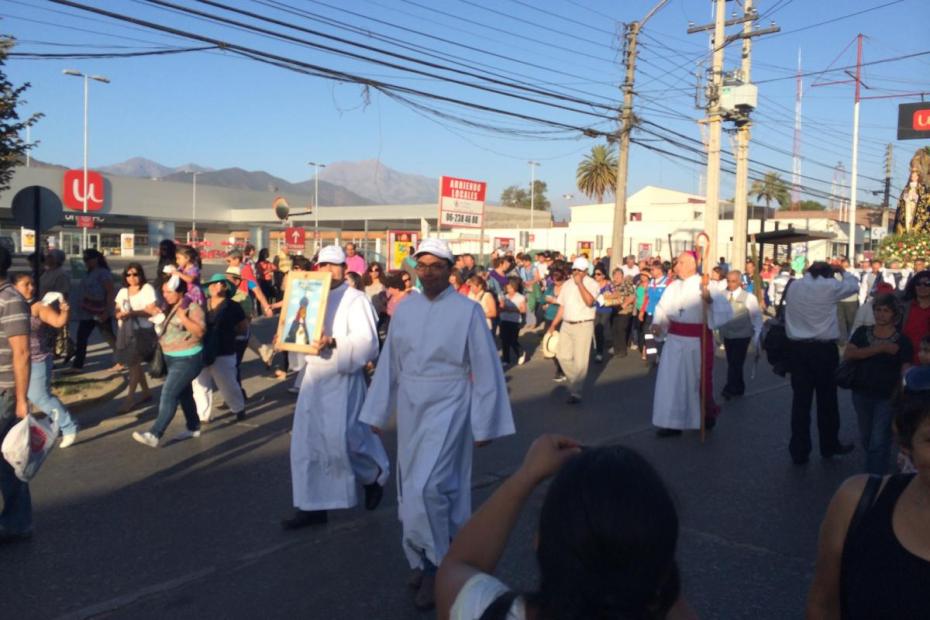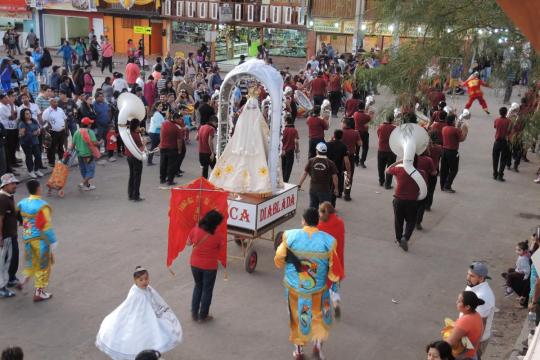A small, but locally significant devotion takes place at the end of the summer in Limache, a small city in the Valparaíso region of Chile. The Feast of the Virgin of the 40 Hours has been celebrated since the 19th century, and expanded significantly in the 20th. The image is said to have been found by fishermen floating in a cask in the sea, and its name connects it to the 40 hours’ devotion before the start of Lent.
A novena precedes the feast. Sunday, the feast day, is said to draw about 50,000 people, about the number of people who live in the city. There is a large commercial fair near the parking area. The parish celebrates 13 Masses on Sunday - most full, and some packed through the aisles. The streets around the parish are shut off for several blocks in every direction. Some attendees come just for one of the Masses, the fair, and a picnic on the plaza, though many stay the afternoon until the procession.
During Mass, the crowds continue to visit the image of the Virgin, who is nearly life-size and has doll-like features, a warm expression, and wavy brown European hair. Her form of dress is regal, in velvet or silk with a crown, and like most Virgin images in Chile, her shape is almost triangular, hiding all her physical features except her face, hair and hands. Visitors purchase holy cards for small donations, and hold these before the Virgin to show their devotion and to represent their petitions.
Perhaps the most striking element of the devotion is the procession, or rather, its culmination. The feast commemorates the one day a year when the Virgin leaves the church, which at many similar devotions is an occasion in and of itself for devotees. More remarkable is the procession’s destination, almost a kilometer away: the city prison. Older attendees say that this has been the custom for as long as they recall. The Virgin is carried on the shoulders of senior men of the parish, surrounded by T-shirted youth of the parish and preceded by a military band, church acolytes, clergy and the bishop.
The bulk of the events take place in and in front of the prison. The statue is held by the men so she faces two open windows of the prison, where the Catholic prisoners are supposed to be able to see her. Clergy and bishops go into the prison, pray with the prisoners, and tell them that they are part of the community and that the church prays for them. Loudspeakers project the sound from inside the prison to the crowd outside. The Catholic prisoners sing to the Virgin, and several give speeches. The acolytes take up a collection among the pilgrims for the needs of the prisoners, and the prisoners present the clergy and the Virgin with a gift that they make, usually of wood. In the procession back, the prisoners’ gift is carried aloft back to the church, in front of the bishop and Virgin, who is returned to the church.
None of the devotees interviewed at the feast in 2014 regarded it as the most powerful manifestation of the Virgin in Chile, but many were dedicated to coming there, and many spoke about how moving the procession is. One woman, who had attended for 65 years, met her husband there, and attended with him and their daughters every year since, until the year he died. She and the daughters continue the tradition, and the daughters said that they would attend together even after their mother passes on. Another person would walk barefoot to show the Virgin her thanks for saving her grandson. Most came occasionally, and almost all spoke about it both as an opportunity to bring their losses and needs to the Virgin, and to picnic in the park and see friends from their town. Attendees said that the feast, while well attended, did not attract as many people as in the past, but those who did attend said how moving it is to follow the Virgin in the procession.
